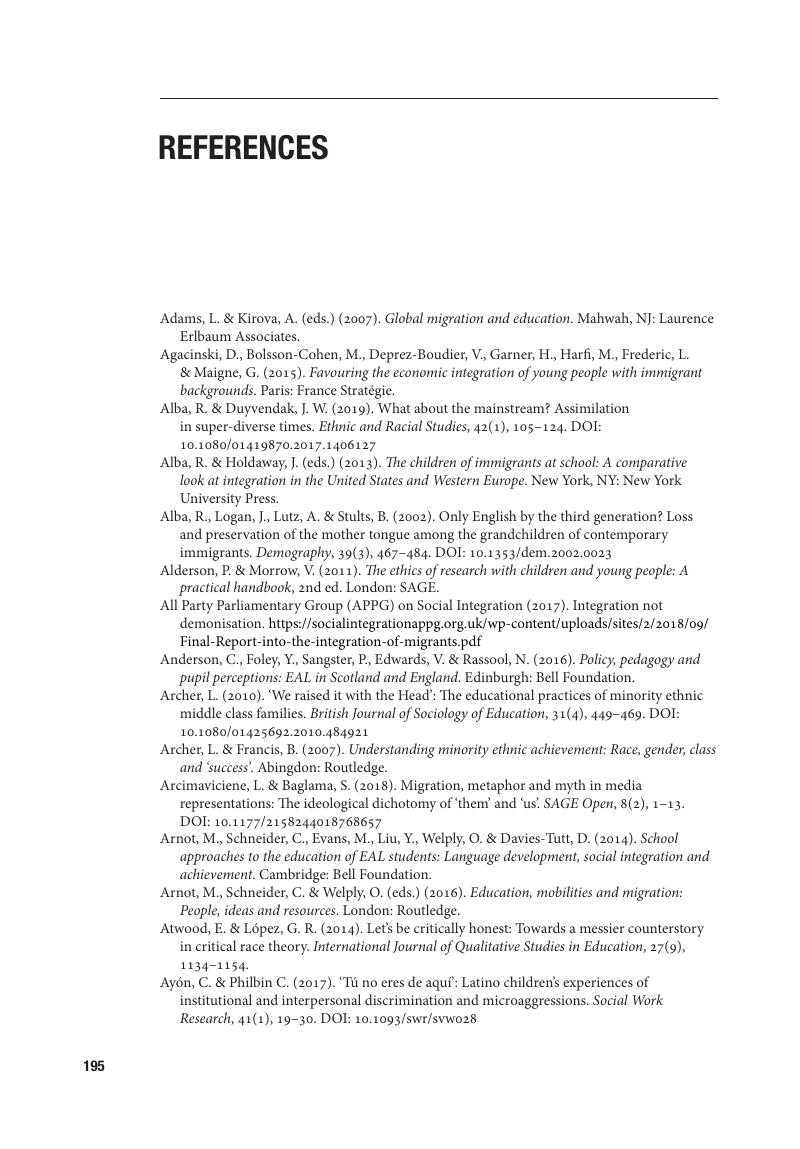Book contents
- Language Development and Social Integration of Students with English as an Additional Language
- Language Development and Social Integration of Students with English as an Additional Language
- Copyright page
- Contents
- Figures
- Tables
- Acknowledgements
- 1 Introduction
- 2 Education and Social Integration for EAL Students
- 3 The International, National and Regional Policy Context of Social Integration in Schools
- 4 The Methodology of Researching EAL
- 5 Progression in Language, Learning and Social Integration
- 6 Towards an Inclusive Pedagogy for EAL in the Multilingual Classroom
- 7 Rethinking Home–School Communication for Parents of Migrant Children
- 8 Conclusion
- References
- Index
- References
References
Published online by Cambridge University Press: 03 July 2020
- Language Development and Social Integration of Students with English as an Additional Language
- Language Development and Social Integration of Students with English as an Additional Language
- Copyright page
- Contents
- Figures
- Tables
- Acknowledgements
- 1 Introduction
- 2 Education and Social Integration for EAL Students
- 3 The International, National and Regional Policy Context of Social Integration in Schools
- 4 The Methodology of Researching EAL
- 5 Progression in Language, Learning and Social Integration
- 6 Towards an Inclusive Pedagogy for EAL in the Multilingual Classroom
- 7 Rethinking Home–School Communication for Parents of Migrant Children
- 8 Conclusion
- References
- Index
- References
Summary

- Type
- Chapter
- Information
- Language Development and Social Integration of Students with English as an Additional Language , pp. 195 - 212Publisher: Cambridge University PressPrint publication year: 2020

